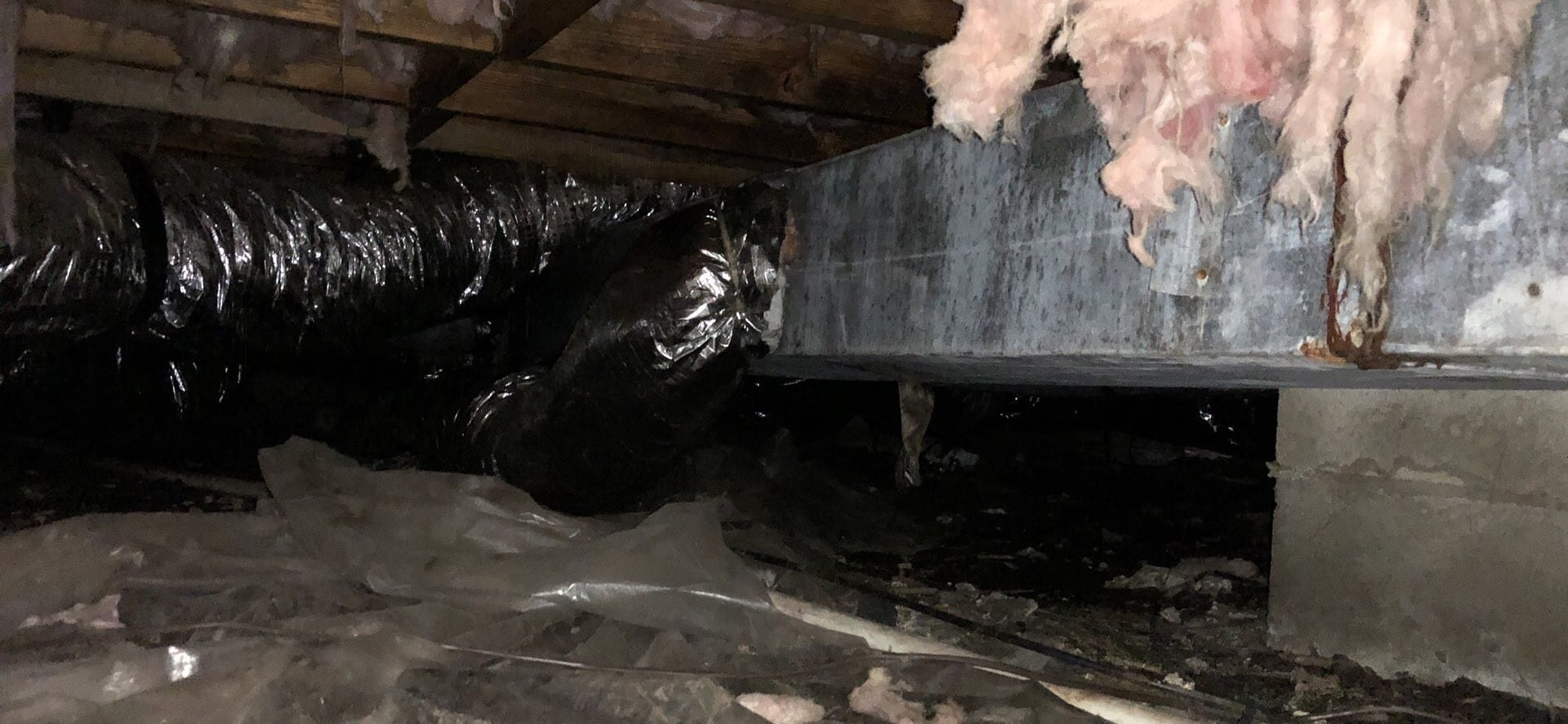
Finding out you have a problem with moisture and humidity under your home is a cause for concern. Excess dampness here can lead to serious humidity effects such as musty odors, mold growth, pest infestations, structural deterioration, foundation erosion, ruined insulation and HVAC system damage. To fix a humidity problem in this area, you’ll first need to identify the cause then take appropriate steps to correct it.
Possible Reasons for High Humidity Underneath a Home
Humidity can become a problem under your home due to:
- Water leakage. These may be leaks originating from appliances or plumbing fixtures in your kitchen, laundry room or bathrooms, your home’s sewer lines or water pipes, or your sprinkler system’s water lines and fittings.
- Inadequate air movement. Your basement or crawlspace may lack sufficient air movement to allow moisture to escape.
- Poor drainage. Rain or water from your gutter or sprinkler system may be pooling along the foundation perimeter instead of draining away.
- Flooding, Any flooding source should be eliminated as quickly as possible to prevent potentially serious damage to the home.
How to Lower Humidity Levels Under Your Home
Depending on the source of the moisture problem, lowering the humidity level under your home may involve:
- Repairing leaks. An experienced plumber can locate and repair any leaks in your plumbing or sprinkler systems to stop water from seeping under the house.
- Correcting gutter deficiencies. Make sure the gutters are in good repair, they’re sized to adequately handle roof runoff, and the downspouts are redirecting runoff a sufficient distance from your foundation.
- Improving drainage. To keep water from pooling around the foundation, you may need to change your sprinkler settings to prevent over-saturating the soil, or have the ground slope increased or a french drain installed to provide better drainage.
- Removing excess humidity. It may be necessary to install a crawlspace dehumidifier to get rid of trapped airborne moisture more effectively.
- Installing a vapor barrier. Adding a properly-installed vapor barrier may be recommended to keep ground dampness from entering the space underneath your home.
- A de-watering pump. The use of a sump pump may be needed especially after a flood to aid in removing water. However, water (and humidity) can still enter through the vents, and humidity can also still enter directly through the dirt floor and foundation walls.
If you need expert solutions to alleviate a moisture problem under your Eastern North Carolina home and prevent adverse humidity effects, contact us at Jackson & Sons. When You Need Us – We’ll Be There!
Jackson & Sons, Inc.
Our goal is to help educate our customers in Eastern North Carolina (including Wayne, Johnston, Greene, Lenoir, and Duplin Counties) about energy and home comfort issues (specific to HVAC systems).